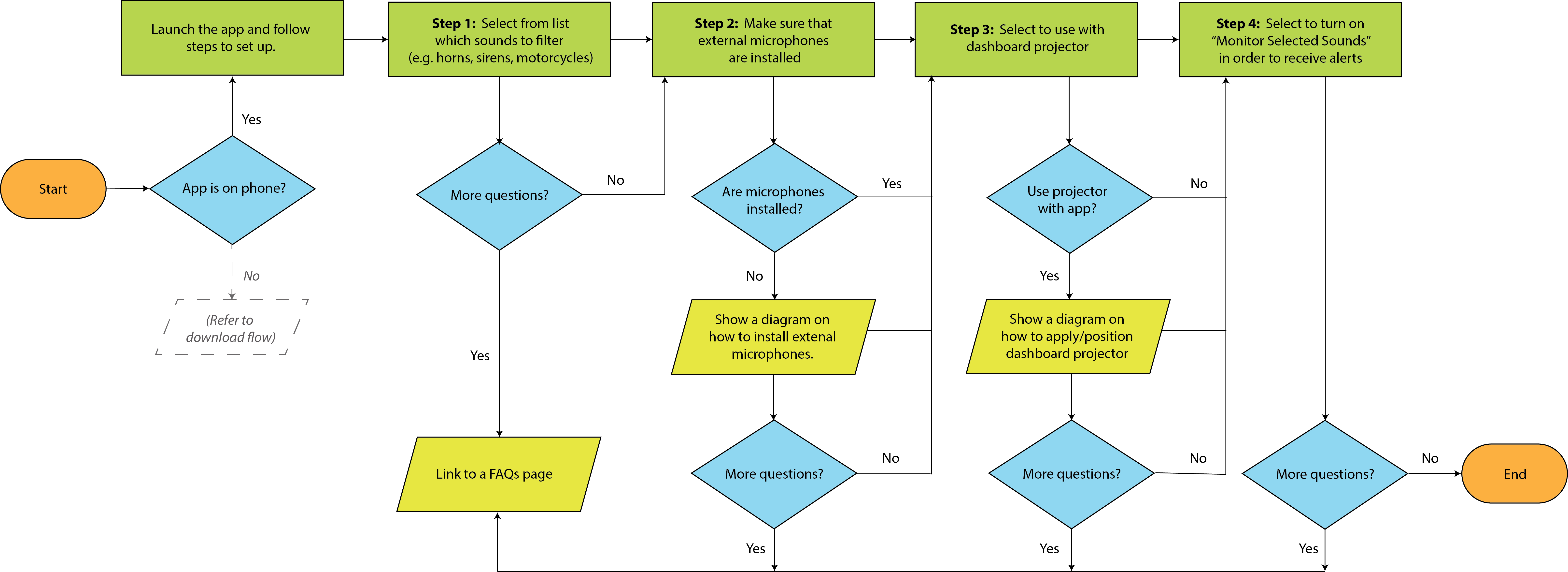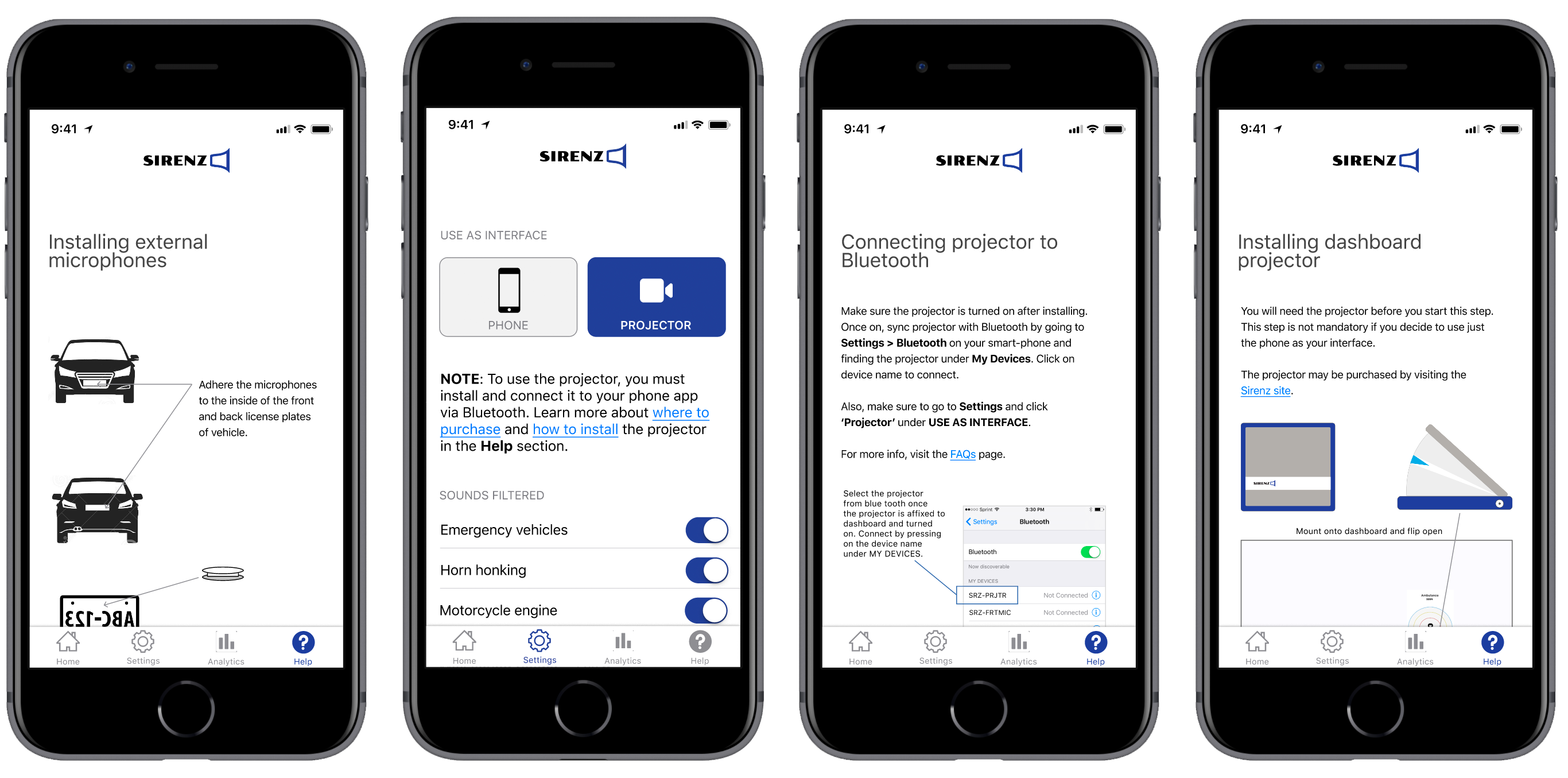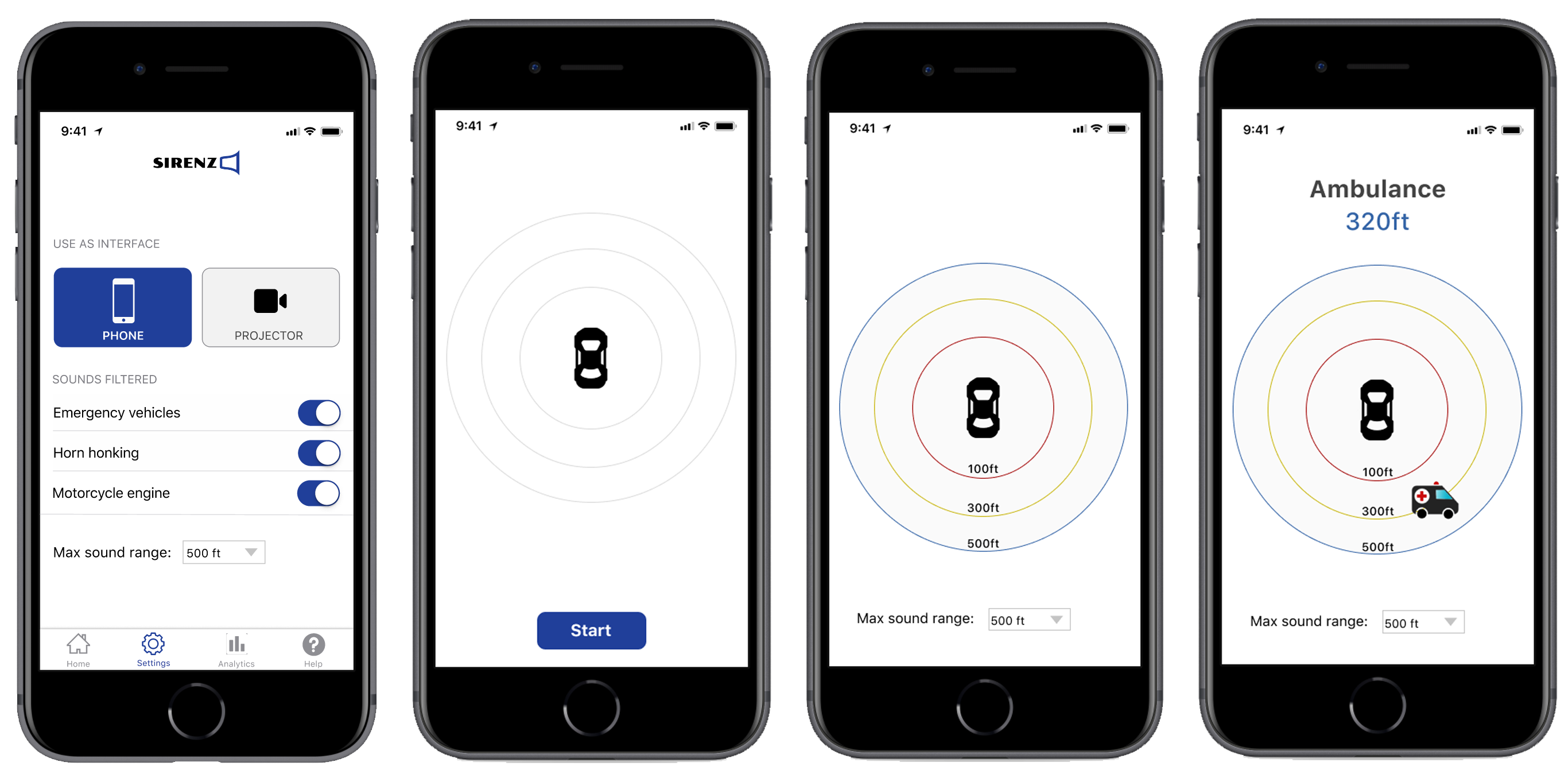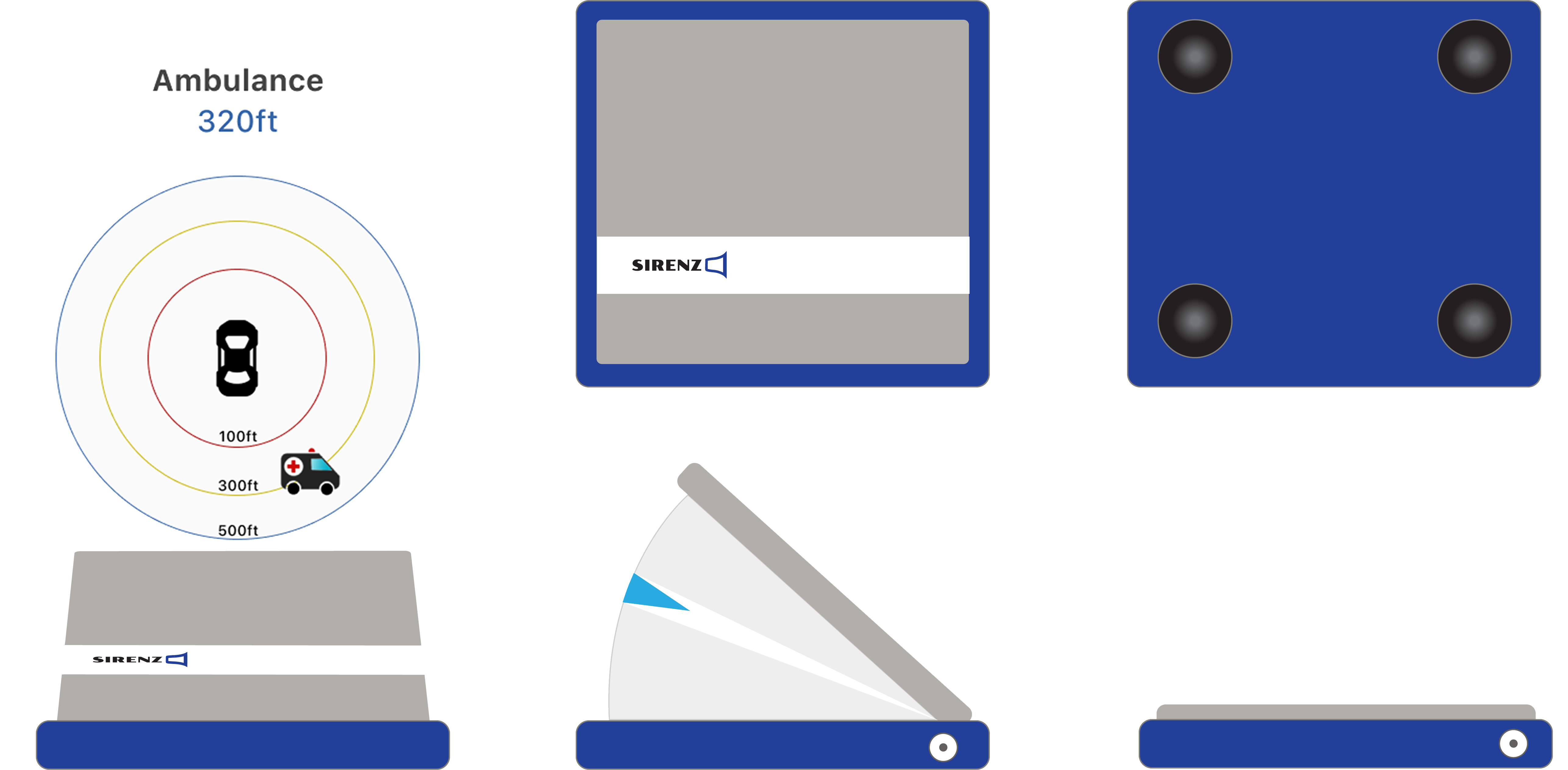Sirenz
Project
This was a project for a UX design class at UC Berkeley. The theme was to design an app involving assistive technology.
I decided on creating an experience that would help people with hearing deficiencies notice hazardous traffic situations while they are driving.
Tools Used
- Figma
- Adobe Illustrator
- Adobe Photoshop
Problem Statement
Create a solution which will help people with hearing loss overcome the obstacle of noticing emergency vehicles, horns honking and motorcycles in blind spots.

Competition
There was some great ideas out in the world already as far as competition was concerned. I found that Hyundai's engineers really put some good thought into this problem and went as far as to build the solution right into the car. There wasn't a need to buy any peripherals from a third party in their case.

Interviews and Personas
To get a better idea of my target audience, I conducted interviews with potential users.
Below are shown personas based on feedback that I gleaned from interviews with Jason(college student) and Tom(a retiree).
Some pull quotes
Jason(College Student):"I often rely on visual cues and I don't usually drive to places I'm not familiar with."
"Having a cochlear implant helps to some degree, but there are still times where I have difficulty hearing well in certain environments."
Tom(Retiree)"If safety features are integrated into the car's system, such as a rear-view camera, I might use them."


Learnings
After conducting interviews and creating personas from information learned, I came up with a list of items for a minimal viable product.
The app is intended to address a market for people who can't afford or don't want to buy a new car with the latest assisted tech installed.
- The process to hook up should be simple. If possible, keep it at only 3 or 4 steps.
- Have an offering for people that have partial hearing as well as those who have almost no hearing at all.
- Create an experience that is agnostic of a driver's current car technology. They shouldn't need to have an infotainment system installed to use product.
- Ideally, it would be nice if the solution wasn't just assistive with sirens, but also with other important sounds as well, such as: car horns and motorcycle engines that are close by.
- Aside from hardware that they would need to install, such as microphones and a projector, the app should be available to most smartphones and be easily downloadable.
User Flows
Keeping to the idea of being able to set up easily, I created a flow that enabled the user to set up in 4 steps. This flow suggests that a user can use just the phone app, or can select to install a projector accessory as well.
I also created a flow that outlines the happy path in the use of the product. This flow takes into account users using only the phone app and users also wanting to use the projector accessory.
User Flow for Setting Up App

User Flow for Using the App

Screens for Set Up
The screens for setting up the app stay true to the vision of simplicity. There are several steps to get up and running, including attaching external microphones, deciding to use the projector accessory and setting up sound filters (e.g. being alerted to emergency vehicles, horns, etc...)
Tools Used
- Figma
- Adobe Photoshop

Screens for App Use
Once installed and set up, using the app is easy. The user may decide to use just the phone, or may want to use the projector accessory as their interface.
Tools Used
- Figma
- Adobe Photoshop

Projector Accessory
In the case that a user wants to use the projector accessory as their primary interface, they can get up and running by pairing it as a BlueTooth device after attaching it to their car dashboard.
Tools used
- Adobe Illustrator
- Adobe Photoshop

